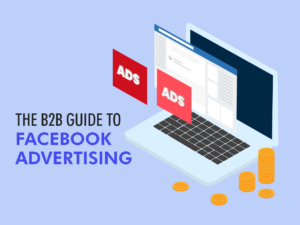Whilst working on the marketing for your business, you’ve probably come across the term ‘Avatar’ or ‘Customer Avatar’. Are you scratching your head, wondering what this other task on your to-do list is and whether it’s even relevant?
Well, it is. And it could be key to defining your target audience and focusing your brand message, therefore hitting the right market and generating healthy sales.
What is an avatar?
Wikipedia defines an avatar as, “a concept in Hinduism that means “descent”, is the material appearance or incarnation of a deity on earth. The relative verb to “alight, to make one’s appearance” is sometimes referred to as any guru or revered human being”.
That’s where the term originates but that’s not quite what we’re after here.
It’s often described as the digital version of yourself, used in online profiles in social media for example, and also popularised on the film Avatar (2009) where the lead character was projected into the local “Na’vi” character. Good film!
A customer avatar, or buying persona, is essentially a profile of your perfect customer or client. When you understand who your ideal customer is, what they look like, their habits, interests, challenges, aspirations, in fact everything about them, you’ll be much more effective in marketing to them.
But I sell to everyone?
That’s a common response. Most people, even if they are focussed on a niche market still take that view. What we are doing is focussing on a specific type of person or buyer and actually when you start this process, you’ll quickly realise that you have more than one, you might have 3 or 4, you might have 15 or 20. Don’t worry if you have many, our goal here is to choose your top one or two to start with.
So, a customer avatar is a fictional character who represents your ideal prospect. When you’ve created your avatar in full it will help you understand your customers’ desires, fears and beliefs, which all influence their buying decisions.
Carrying out an avatar exercise can cause a huge transformation in your business. If you’re a Business to Business (B2B) organisation, you might include
- What industry your customers are in
- How many employees they have
- How much annual revenue they generate
If you’re a Business to Consumer (B2C) business, you might include relevant demographic information such as
- Age
- Gender
- Do they have children
- How old are they
- What are their interests or occupation
Once you’ve gone through the avatar blueprint, you’ll turn it into a story.
The avatar story
Here’s an example of a poorly written avatar story for an interior design company working with restaurants.
‘Our ideal customer uses our services because they want their restaurant to look awesome to draw people in.’
This is not really an avatar, and it doesn’t really tell us anything about who the customer is, just that they have a restaurant. Here’s another example of an avatar for the same business.
‘Adam is a 28-year-old chef from Birmingham. He went to public school where he learnt food tech and he enjoyed helping his parents in the kitchen. He got a job as a pot washer and helped with food prep in a kitchen, gaining experience. He found his joy of food, deciding his lifelong goal is to own a restaurant. He goes to college to study cookery, gets a job as a chef, then sous chef, working his way to the head chef position. He starts to think about opening a restaurant, researches the market, looks for a location, finds a site, gets financial backing and then he looks for an interior designer.
He’s driven by his passion for food, having the ability to create his own dishes in his restaurant and the financial reward of having his own restaurant. He’s scared of failure, the initial start-up costs, that people won’t like his food and the pressures of owning his own business.
For inspiration he travels, visits trade shows, food markets and other restaurants to sample food.
He reads popular chef blogs and magazines and enjoys photography and adrenaline sports outside of work.’
There is a lot more detail behind this statement or story, but this is the outcome.
Having this very clear fictitious character makes them real, it’s not just an entry on a database you’re trying to sell to, this is a real person with real fears, beliefs, passions, dreams and goals. You’re there to serve them and add value to their lives. It’s much easier to do that if you know who you’re talking to.
A business can have multiple avatars. This interior design company may decide to branch into pub chains which would be a different avatar, or a completely different area of design, such as offices. I know in their case they want to be known as the interior designer to go to for restaurant design, so this is the complete focus for their branding, social media, website and marketing.
What was interesting with this interior design company is that over a period of time they realised they had more than one Avatar for chefs:
- Start Up Chef
- Crowd Funder Chef
- Street Food Chef
- Entrepreneur Chef
- The Head Chef
- Old School Chef
Each of them had different profiles and backgrounds, pains and desires and therefore had different stories.
Time to visualise!
Now you confidently know what an avatar is and the benefit of building one for your business.
It’s time to get to work. Start visualising your customer avatar – on your commute, while you make tea, doing your daily exercise – and over time you will focus your branding to find the perfect customer.
Contact Future Marketing today for further advice on how to build your customer avatar.



